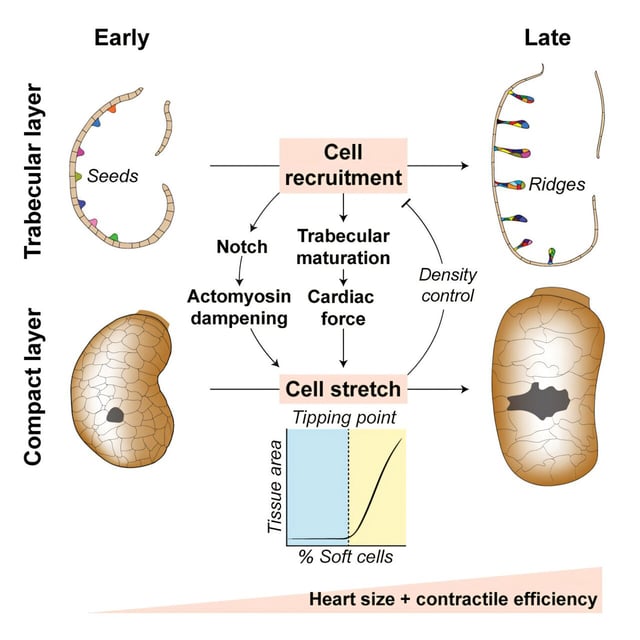Overview
- The latest Developmental Cell study uses live 4D imaging in transparent zebrafish embryos to track early heartbeats and cell behaviors in real time.
- Researchers observed that early contractions trigger a mechanochemical feedback loop that softens myocardial cells, enabling them to stretch and increase heart volume by 90%.
- Trabecular ridges form by recruiting and rearranging existing myocardial cells rather than through cell division, boosting muscular complexity efficiently.
- As cells stretch and lose recruitability, the feedback mechanism naturally stabilizes the pace and density of trabecular growth.
- This intrinsic self-organizing mechanism could deepen understanding of congenital cardiomyopathies and inform future regenerative heart therapies.
